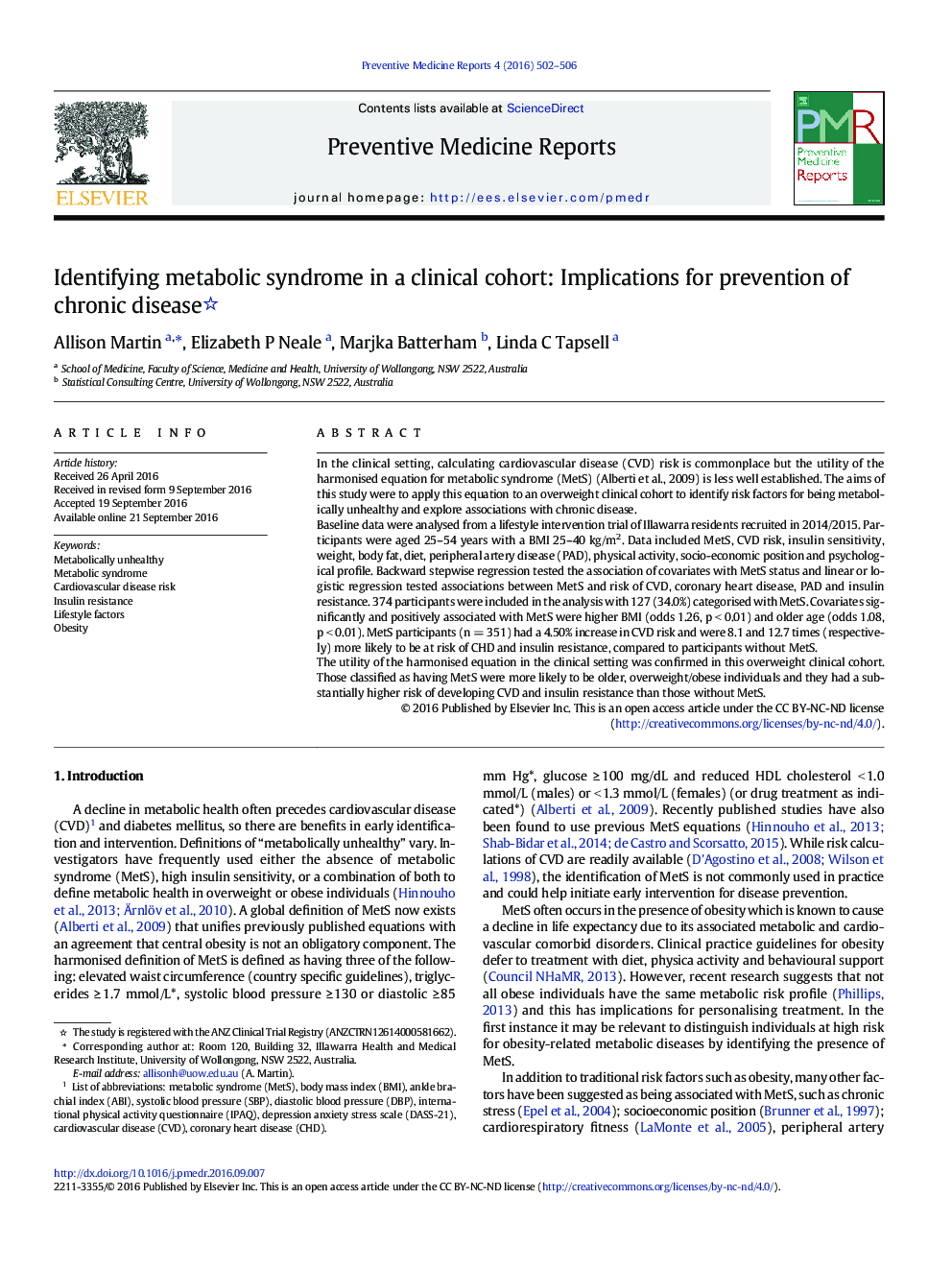| کد مقاله | کد نشریه | سال انتشار | مقاله انگلیسی | نسخه تمام متن |
|---|---|---|---|---|
| 4202304 | 1609088 | 2016 | 5 صفحه PDF | دانلود رایگان |
• Older, obese individuals at greatest risk of having Metabolic Syndrome (MetS)
• Stress, socioeconomic, fitness and diet factors were not associated with MetS.
• MetS individuals had increased cardiovascular risk of 4.50%.
• MetS were 12.7 times more likely to be insulin resistant.
• Study identifies those at risk in order to implement early lifestyle changes.
In the clinical setting, calculating cardiovascular disease (CVD) risk is commonplace but the utility of the harmonised equation for metabolic syndrome (MetS) (Alberti et al., 2009) is less well established. The aims of this study were to apply this equation to an overweight clinical cohort to identify risk factors for being metabolically unhealthy and explore associations with chronic disease.Baseline data were analysed from a lifestyle intervention trial of Illawarra residents recruited in 2014/2015. Participants were aged 25–54 years with a BMI 25–40 kg/m2. Data included MetS, CVD risk, insulin sensitivity, weight, body fat, diet, peripheral artery disease (PAD), physical activity, socio-economic position and psychological profile. Backward stepwise regression tested the association of covariates with MetS status and linear or logistic regression tested associations between MetS and risk of CVD, coronary heart disease, PAD and insulin resistance. 374 participants were included in the analysis with 127 (34.0%) categorised with MetS. Covariates significantly and positively associated with MetS were higher BMI (odds 1.26, p < 0.01) and older age (odds 1.08, p < 0.01). MetS participants (n = 351) had a 4.50% increase in CVD risk and were 8.1 and 12.7 times (respectively) more likely to be at risk of CHD and insulin resistance, compared to participants without MetS.The utility of the harmonised equation in the clinical setting was confirmed in this overweight clinical cohort. Those classified as having MetS were more likely to be older, overweight/obese individuals and they had a substantially higher risk of developing CVD and insulin resistance than those without MetS.
Journal: Preventive Medicine Reports - Volume 4, December 2016, Pages 502–506
